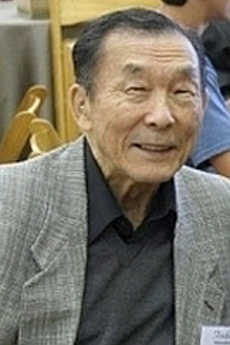
Herbert Nagasawa, PhD
Titles
Education
University of Minnesota (Biochemistry), 1955-1957
PhD, University of Minnesota, 1955
Western Reserve University, 1950
Biography
Bio
My research interests over the past several decades have been in the design of prodrugs of biologically active substances, some of them of endogenous origin. For example, the design and synthesis of prodrugs of glutathione, known as the master cellular antioxidant, as well as its biochemical precursors, in order to render them orally bioavailable. Research on the biochemical-pharmacology of cyanamide, an alcohol deterrent drug whose action is to inhibit the enzyme aldehyde dehdrogenase (AlDH), led to the identification of the highly reactive nitroxyl (HNO), the active metabolite of cyanamide that inhibits ALDH, and the development of a series of nitroxyl prodrugs that were potent inhibitors of this enzyme.
Based on principles learned above, various prototype prodrugs of the chemically unstable 3-mercaptopyruvate (3-MP), the endogenous transamination product of L-cysteine, were developed as novel and highly effective cyanide antidotes. 3-MP is a substrate for 3-merecaptopyruvate sulfur transferase (3-MST), the ubiquitous enzyme found in the cells of most organs including the central nervous system, and is converted to a reactive sulfane sulfur that detoxifies highly toxic cyanide to innocuous thiocyanate.
Research Summary
More recently, attention has been directed toward the design of (a) hydrogen sulfide generators that could protect against ischemic-reperfusion injury following a heart attack, and (b) rationally-designed nicotine haptens that provide more specific nicotine antibodies for the development of smoking cessation products.
Publications
- Brenner, M.; Kim, J. G.; Mahon, S. B.; Lemor, D.; Ahdout, R.; Boss, G. R.; Blackledge, W.; Jann, L.; Nagasawa, H. T.; Patterson, S. E. Sulfangen sodium treatment in a rabbit model of sub-lethal cyanide toxicity. Toxicol. Appl. Pharmacol.2010, 248, 269-276.
- Nagasawa, H. T.; Goon, D. J. W.; Crankshaw, D. W.; Vince, R.; Patterson, S. E. Novel, orally effective cyanide antidotes.J. Med. Chem.2007, 50, 6462-6464.
- Crankshaw, D. L.; Goon, D. J. W.; Briggs, J. E.; DeLong, D.; Kuskowski, M.; Patterson, S. E.; Nagasawa, H. T. A novel paradigm for assessing efficacies of potential antidotes against neurotoxins in mice. Toxicol. Lett. 2007, 175, 111-117.
- Oz, H. S.; Chen, C. S.; Nagasawa, H. T. Comparative efficacies of two cysteine prodrugs and a glutathione delivery agent in a colitis model. Translational Res. 2007, 150, 122-129.
- Lee, M. J. C.; Shoeman, D. W.; Goon, D. J. W.; Nagasawa, H. T. N-Hydroxybenzenecarboximidic acid derivatives: A new class of nitroxyl-generating prodrugs. Nitric Oxide 2001, 5, 278-287.
- Shirota, F. N.; DeMaster, E. G.; Lee, M. J. C.; Nagasawa, H. T. Generation of nitric oxide (NO) and possibly nitroxyl (HNO), respectively, by nitrosation of sulfohydroxamic acids and hydroxamic acids. Nitric Oxide 1999, 3, 445-453.
- Nagasawa, H. T.; DeMaster, E. G.; Redfern, B.; Shirota, F. N.; Goon, D. J. W. Evidence for Nitroxyl in the Catalase-Mediated Bioactivation of the Alcohol Deterrent Agent, Cyanamide. J. Med. Chem. 1990, 33, 3120-3122.
- Roberts, J. C.; Nagasawa, H. T.; Zera, R. T.; Fricke, R. F.; Goon, D. J. W. Prodrugs of L-cysteine as protective agents against acetaminophen-induced hepatotoxicity. 2-(Polyhydroxyalkyl)- and 2-(Polyacetoxyalkyl)-thiazolidine-4(R)-carboxylic Acids. J. Med. Chem. 1987, 30, 1891-1896.